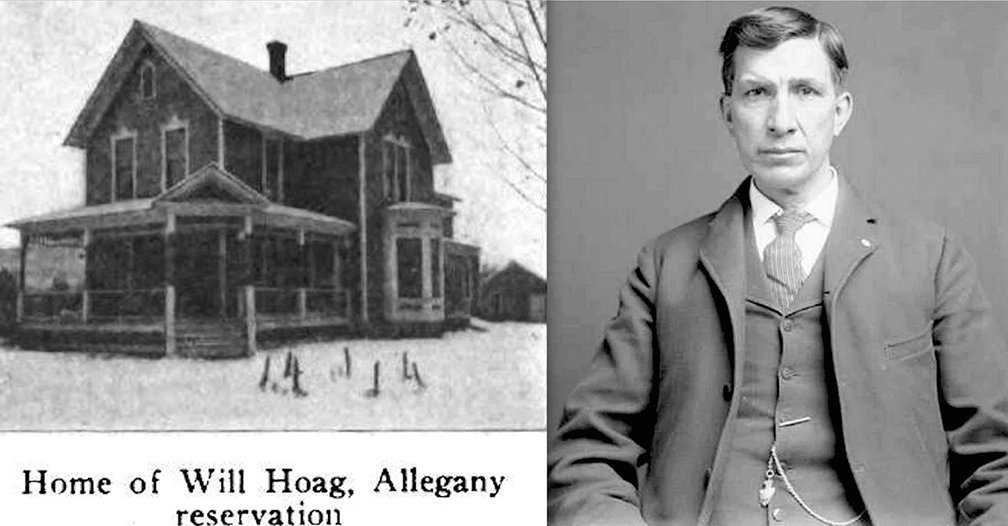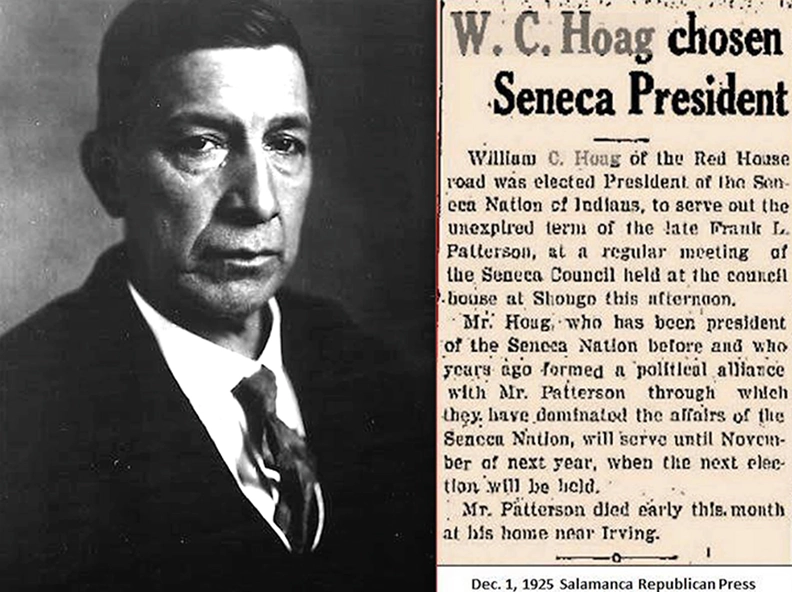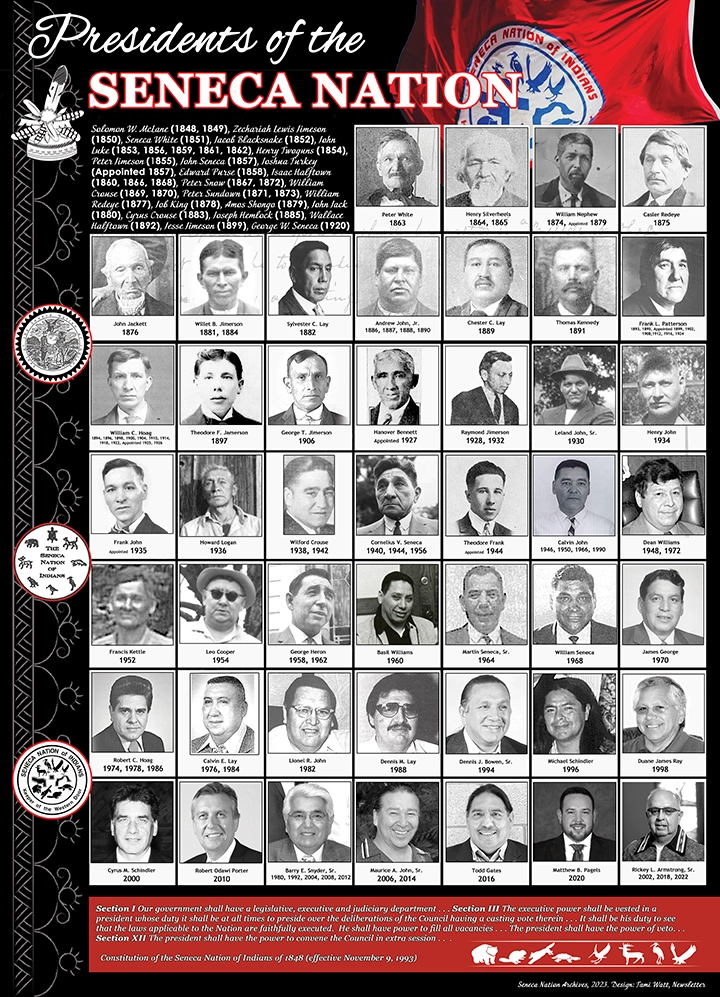William C. (Clark) Hoag (1860-1927) son of William Clark Hoag and Lucy (Taylor) Hoag. He enrolled at the Tunesassa Quaker Friends Indian School at age 12 and graduated in 1878. William C. Hoag was a self-made man. His father died when he was eight years old and William, since he was the only son, was forced to assume a great many responsibilities at an early age.
He began his farming operations on 75 acres. After the death of his mother, in 1880, he started to expand his farm.
In 1911, William C. Hoag was described as a “prosperous and wealthy agriculturist, operating more that 500 acres of land in the river valley, principally under cultivation, raising various kinds of stock and also conducting an extensive dairy.” His home contained “all of the conveniences and many of the luxuries of modern home life, including his own gas plant.” The Hoag farm, in general, was “equipped with excellent buildings.”

Friend Arthur C. Parker recalls Hoag “as an astute business man and industrious worker. He was an office holder in the Seneca Nation continuously from the time he was elected Treasurer at age 21 until his death. This is longer than any other Seneca Indian ever held office. He was an able business man… never shrank from hard manual labor despite his considerable wealth.”
“He started with a small farm of 75 acres and at his death his holdings must have amounted to more than 2000 acres. He had holdings in several gas and oil companies and also was a heavy stockholder in the local railroad companies. He owned the William C. Hoag Dairy Company which distributes milk to Salamanca,” shares Parker.
In keeping with the Quaker tradition, Hoag did not drink. In fact he was for a great many years the head of the Seneca branch of the Iroquois Temperance League. He was also very well established before marrying Dora Tall Chief, daughter of Jesse and Sara (Two Guns) Tall Chief. It is interesting to note that his wife’s grandfather was William Tall Chief, a chief of the Senecas who served the War of 1812. Hoag’s first child, Mable, was born in 1889 when William was 29 years old. His second child, Arthur, was born in 1893. William C. Hoag had also been greatly influenced by the Christian Teachings of the Quakers. He joined the Presbyterian Church on the Allegany Reservation and actively supported it until his death on July 30, 1927.
Hoag’s political career commenced in 1882 when he was elected treasurer of the Seneca Nation of Indians. The next year, due to the system of checks and balances in the Seneca Constitution, the Treasurer role reverted to the Cattaraugus Reservation. Hoag was ejected as clerk of the Nation. From then on, William C. Hoag was actively engaged in politics. In 1884 he was elected treasurer. The same was true for 1886 and 1891. 1n 1888 he had been the clerk once again. He served as President eleven times, a record for the Seneca Nation leadership role.

In May of 1892, Hoag was elected president of the Seneca Nation of Indians. This was a highlight of his political career. For the first time in Seneca History, there was a formal inauguration ceremony. This occurred in the first week of June at the court house on the Cattaraugus Reservation. On this day a procession left the Tallchief home on the road leading to Versailles, and proceeded to the court house, a half mile distance. This was composed of bands, officials in carriages, and a squad of Indian Union veterans of the war of rebellion flags flying. The entire procession was about a “half a mile in length and made a fine appearance.”
Throughout the remaining portion of the nineteenth century and twentieth century Mr. Hoag maintained a powerful hold of the Seneca Nation of Indians. In 1893, Hoag was succeeded in the presidency by Frank Patterson of the Cattaraugus Reservation. Hoag, however, was elected Treasurer. In 1894 Hoag was again president. The same was true for the years 1896, 1898, and 1900, years Hoag controlled the treasurership. By 1911, Hoag was still being elected president. In fact, he died in office in 1927. It is apparent that William C. Hoag was the most powerful politician to ever represent the Seneca Nation of Indians in the early 20th century. It was a time of progress and gala governmental ceremonies. The Hoag era was truly one of the most colorful portions of Seneca Nation History.
Sources: Salamanca Republican Press, FaceBook: @Bob Schmid, @ImFromtheAlleganyTerritory
Seneca Nation President’s Day
The Seneca Nation observes President’s Day on June 15th, the late Calvin “Kelly” John’s birthday, (b.June 15, 1920- d.October 8, 2004). John served as a four time President for the Nation (1946,1950,1966,1990) as well as Treasurer and Councillor. John’s role as President was pivotal during the 99-year Salamanca Lease Agreement in the early 90’s.





